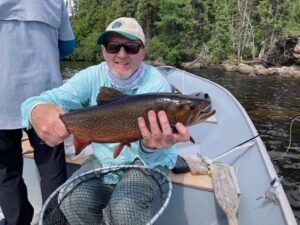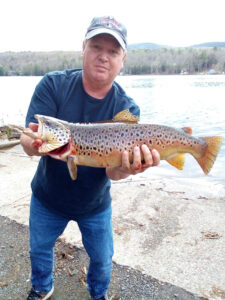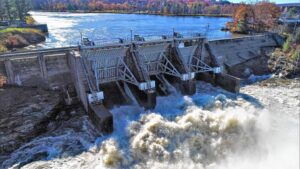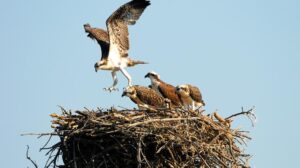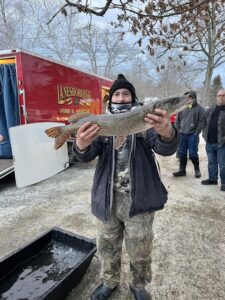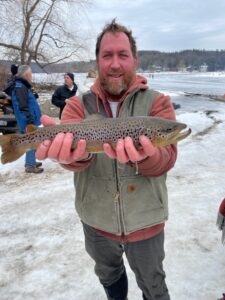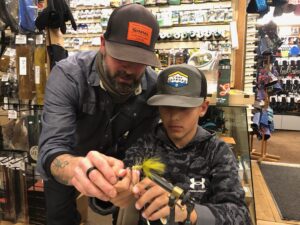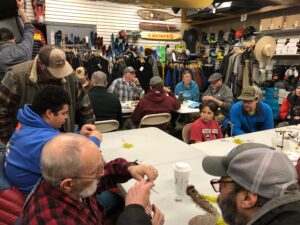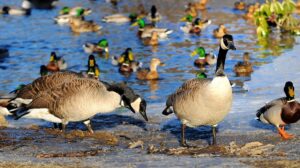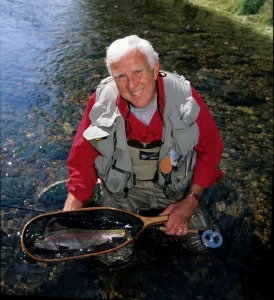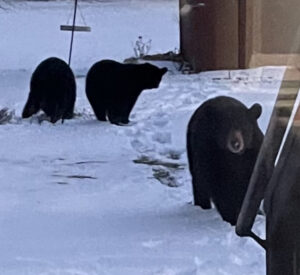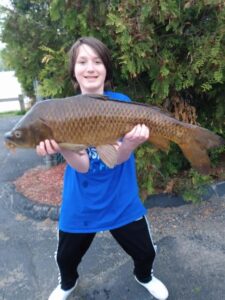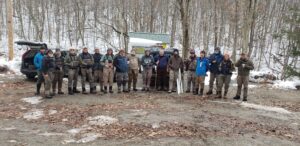Readers may recall last year that I wrote about a flyfishing trip to Labrador where two local anglers, Mike Shepard and Craig Smith joined several anglers from the eastern part of the state and New Hampshire. They were after the large brook trout that exist up there in the Eagle River system. You may recall that I bemoaned the fact that I was scheduled to go too, having paid for the lodge, guides and air fare to get there. But I had some health issues going on and was unable to go. I wrote about the trip anyway with information about the wonderful catches provided by Mike and Craig.
The outfitter and airlines allowed me to defer my payments to be applied on a trip this year and I excitedly began planning for the trip. All I had to do was to get better. Thanks to the good doctors and nurses at Berkshire Medical Center and Phelps Cancer Center in Pittsfield, I am still around and feeling better, albeit with additions to and deletions from my body parts and 45 pounds lighter. This year I would be fishing with Mike Shepard of Dalton, Carl Racie and Mike Miller of Athol, Gary Hebert of Richmond, NH, Bill Waite of Westminster and former MA F&G Commissioner Ron Amadon of Templeton. We have previously fished together in Labrador and have become close friends.
But, as time neared, it became obvious that I was not yet strong enough to do the 2 1/2-miles treks into moose bogs, lichens etc. to get to some of the fishing spots (you may recall that last year, the muck was so strong that it pulled the felt bottoms off of Craig’s waders). On top of that I have been nursing a couple of bum shoulders which prevented me from casting the heavier flyrods and fly lines required to catch those large fish. Sadly, I had to bow out……again! (One man out)
The rest of the guys continued their preparations. Mike Shepard was tying up a bunch of large flies (green drakes) for all of the fellas. He was to drive out to Greenfield, MA and join the others on their trip to Montreal, Canada. After spending a night in a hotel there, they would fly out to Goose Bay where they would spend another night, and then hop onto a float plane which would fly them into a remote camp (Igloo Lodge) out of which they would fish.
Unfortunately, on the morning that Mike was to leave, he developed a serious cold. He felt lousy and he did not want to give it to the others which would in turn ruin their week stay. Mike drove out to Greenfield, delivered the flies that he had tied for them and came back home. He spent the following week trying to recover from that cold. (Two men out).
After two days of traveling the group finally made it to Goose Bay, Labrador and were ready for the fly-in to the camp. As soon as they arrived in Goose Bay, Bill Waite received an urgent call informing him of a medical emergency at home. He turned around and caught the first flight out and returned home (Three men out).
That left Mike Miller, Carl, Gary and Ron to continue the travels to the camp. The following is a narrative provided by Gary:
“A week before arrival we got a notice from the lodge that due to unseasonably high temperatures, the fishing had essentially shut down. Water temperature in both the lake and river were averaging 78 degrees F which was unheard of. Trout need 60 degrees F or lower temp waters to thrive. Only a few fish were caught in the last three weeks.
We flew into camp on our float plane to find a lot of sad faces and poor fishing reports. The bright spot was the camp had undergone some significant improvements under the new ownership of Craig and Steve Gillingham. The weather was forecasting cooler temperatures and some rain towards the end of our stay. True to the report that we had been given, the fishing was terrible for the first couple days. We did manage a few dozen 1 – 2 lbs. fish in the river but that was not our goal. We came for the world class 5-8 lbs. trophy Brook Trout.
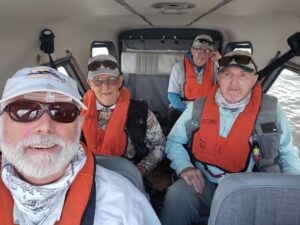
Four anglers seated in the float plane. L to R: Ron Amidon. Carl Racie, Mike Miller and Gary Hebert. Photo provided.
To add to the frustration the river and Igloo Lake had an algae bloom that made the water pea green, and which made for very difficult wading. Fortunately, this year no one got baptized and no one, including me, broke any rods. That was a first. I’m usually good for at least one or two!!
After a couple days of poor fishing, we decided to head to Burton’s Pond, a remote pond that’s a 25-minute boat ride and a 2 1/2 mile hike through a bug infested swamp trail. The pond hadn’t been fished for several weeks due to the water temps but we were up for the challenge. We lucked out and had the small camp Beaver float plane fly us in on our first attempt at Burton’s Pond. We had gotten a tip from a group that fished Burton’s the day before that they had a little luck near a spring fed brook entering the pond. After the float plane landed, we met our guides with their boats in the middle of the pond. The plane couldn’t get near the shore due to rocks and low water. The guides had to hike in to get the boats and meet us.
We headed directly to the spring and found the mother lode in a cool protected cove. The fishing was incredible. We netted over 150 beautiful Brookies weighing 4-8 lbs., smashing the camp record. It was an incredible day on the water.
Two days later we went back but this time we had no available plane so the four old duffers hiked in and experienced another fantastic “Bonus” day. We were so elated that we practically jogged through the 2 1/2-mile swamp.
The camp has been a great steward of the local ponds and rivers especially during this crazy heat spell. All trout were caught and quickly released using barbless hooks. All fish were released from the net without being removed from the water or being handled. Only a couple of fish were permitted to be held quickly for a special photo.
The food has always been good at Igloo but this trip it was outstanding. The camp has added some additional support staff for the kitchen and for the facilities.
There were eight sports in camp. Two brothers from New Brunswick and a father and son from Minnesota. All of them were great guys.
All in all, the trip turned out nice.”
Gary described this trip as “From Bust to Bonus.”
Igloo Lake is already booking into 2025, but fortunately Mike Shepard, Craig Smith and I are already booked for 2024. Gary, Mike Miller, Ron and Carl will be fishing in Iceland next year.
Public hearing to extend archery deer hunting season
MassWildlife is holding a hybrid public hearing on Tuesday, August 15, at 1:00 pm on proposed regulations that would extend the dates of the archery deer hunting season in Wildlife Management Zones 1–9 by two weeks. The amendments would be to 321 CMR 3.02 Hunting of Particular Game in Massachusetts.
If approved, the archery deer season would begin statewide in all zones on the eighth Monday prior to Thanksgiving, and end on the first Saturday after Thanksgiving. The public can attend the hearing and provide oral comments either in-person at the MassWildlife Field Headquarters (1 Rabbit Hill Road, Westborough) or via a Zoom video webinar. Click onto the MassWildlife web site to find out how to join the webinar meeting.
The full hearing notice, including the text of the proposed regulations, is available on MassWildlife’s Public Hearings page. Written comments will be accepted for 2 weeks after the hearing until Tuesday August 29, 2023 at 5 p.m.
To submit written comments email susan.sacco@mass.gov to the attention of the Fisheries and Wildlife Board, or mail comments to Chair, Fisheries and Wildlife Board, c/o Director of MassWildlife, Mass. Division of Fisheries and Wildlife, 1 Rabbit Hill Road, Westborough, MA 01581.

